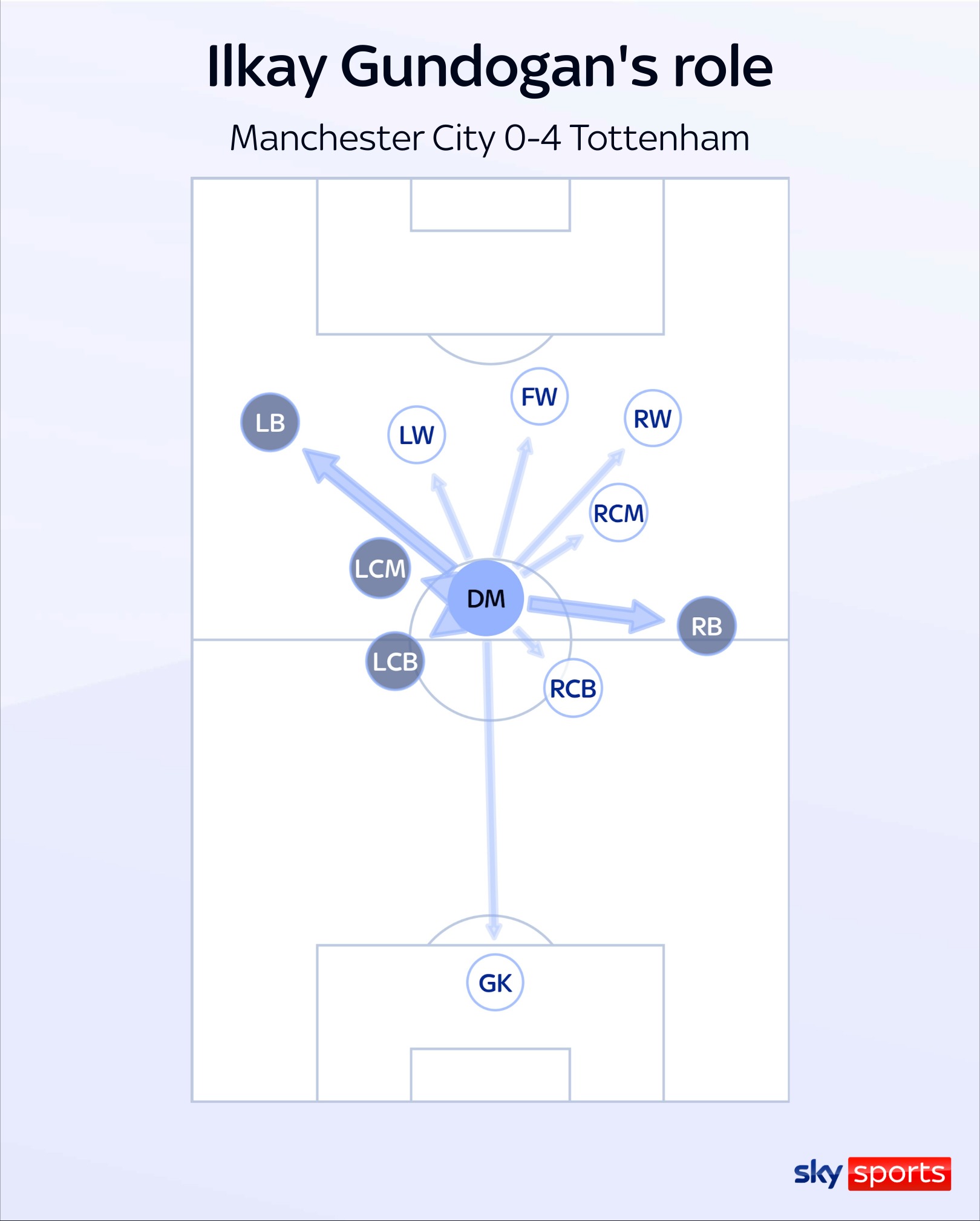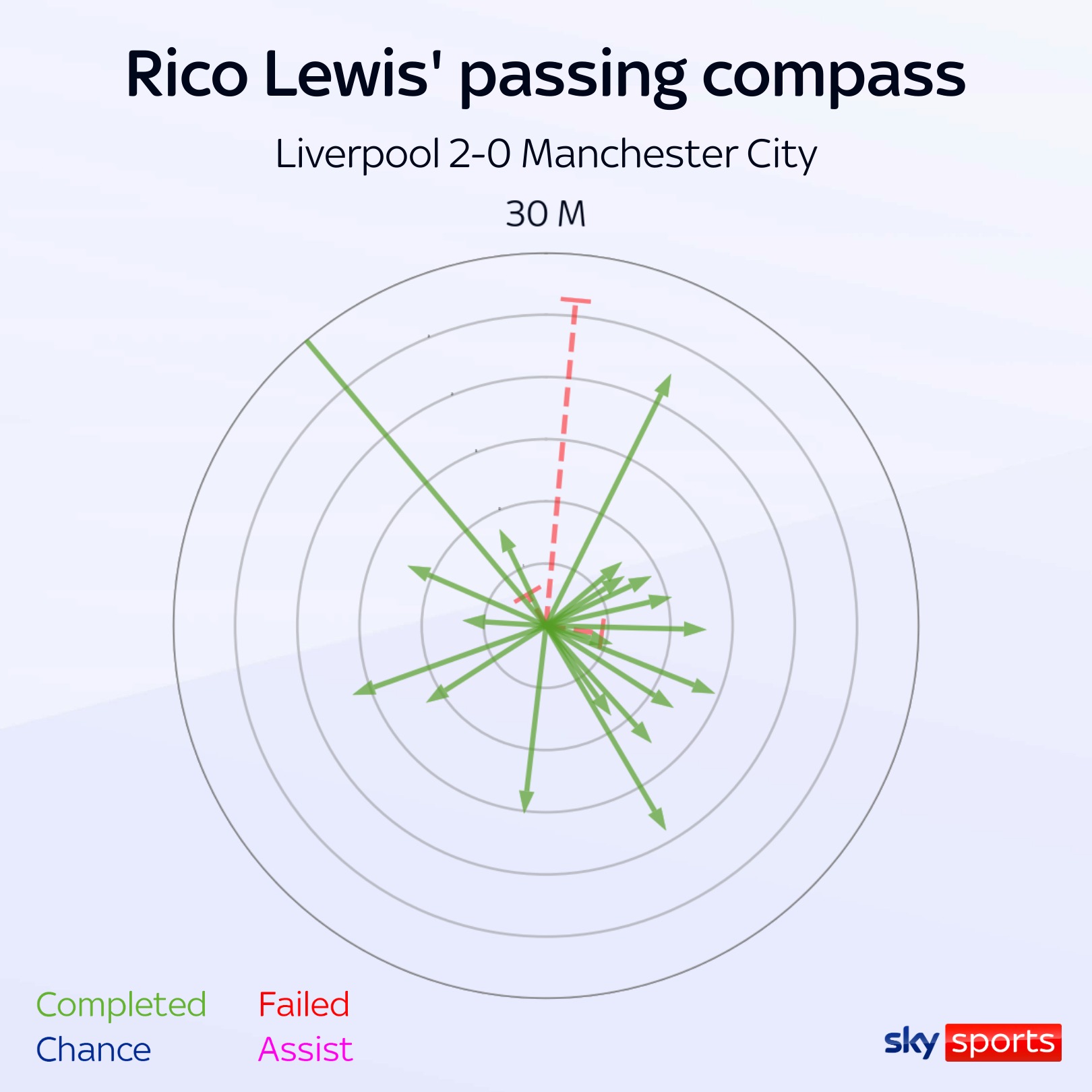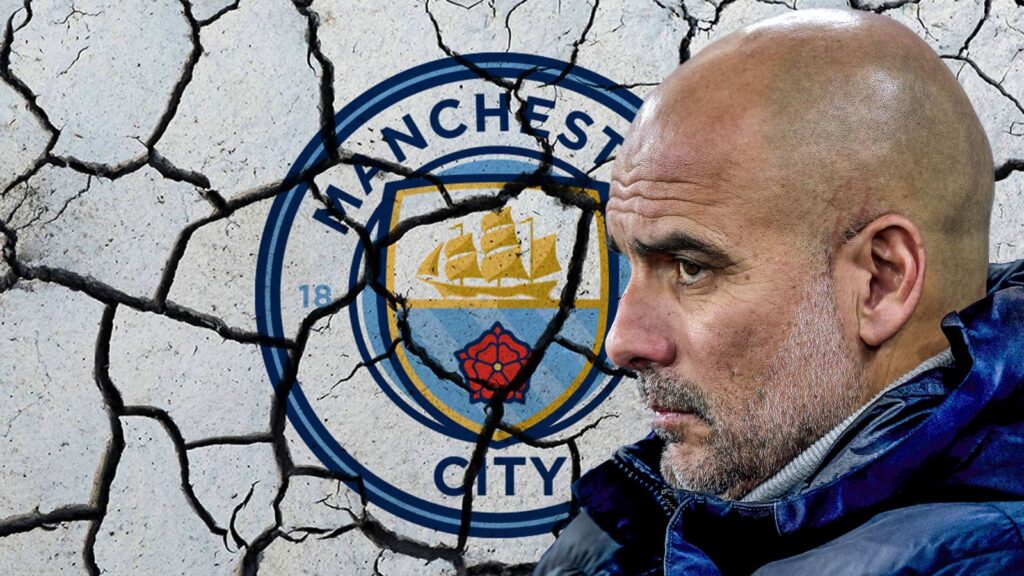[ad_1]
Empires fall and Manchester City’s collapse has been sudden. Fourteen unbeaten. Seven without a win. But while the decline of Pep Guardiola’s team has been sharp, it is also the product of poor planning and a series of underwhelming signings.
It already seems clear that Rodri’s serious knee injury will come to define City’s season and a player of that calibre – the winner of the Ballon d’Or no less – would always be missed. But there was no need for his absence to completely derail their campaign.
It is a consequence of the squad that has been constructed, one about which Guardiola can claim the need to substitute Ilkay Gundogan when three goals up against Feyenoord because he is the only holding midfielder on the books who is available.

That Gundogan, 34, is really a holding midfielder at all is up for debate. A deep-lying playmaker, perhaps, but one who was torn between pointing and chasing when James Maddison ran away from his ageing legs in that chastening 4-0 defeat to Tottenham.
In isolation, the decision to bring back such a popular player might be explained away as a no-brainer. And yet, it is revealing that this fading force is required to fill such a gaping hole in the squad. Rodri has no equal but was a similar profile really impossible?
Mateo Kovacic, 30 himself and another signing that felt like a short-term fix rather than a rebuild, is similarly unable to stop the counter-attacks that are killing City’s title hopes. The absence of a defensive-minded midfielder has left them alarmingly vulnerable.
The number of fast breaks leading to a shot on their goal is higher than ever before in Guardiola’s reign. The failure to control those counters is undermining their possession game, those passages of play too likely to end in a chance for their opponent instead.
It is not as if the consequences of Rodri’s injury should have been a shock to the club. Four of their five defeats last season came in the nine games that he missed. And it is not as if Rodri is the only player of outsized importance in an imbalanced squad.
The decision to let Julian Alvarez leave for Atletico Madrid in the summer leaves them without an obvious replacement for Erling Haaland. The Argentinian scored seven goals during the period in which Haaland was injured last winter. Who would do that now?
Some of these recruitment calls, the increasingly misjudged sale of Cole Palmer included, can be put down to the demands of profit and sustainability rules. But there would be sympathy for that argument had money not been spent freely in other areas.
City paid £53m to bring in Matheus Nunes from Wolves late last summer, a sizeable fee for a player who has started only 11 Premier League games since. Even now, Guardiola does not feel able to play him in a central role, which raises questions about the signing.
Against Liverpool, Nunes was used on the left wing – perhaps the one position on the pitch where City look overly stocked. Jack Grealish, Jeremy Doku and Savinho – three players who might consider that their best position – were among the substitutes.
Grealish, signed for £100m of course, can at least point to the role that he played in the club’s treble-winning season. But the fact that City have dipped into the market for wingers time and again since then suggests he has been no more than a qualified success.
The complaint has long been that Grealish does not contribute enough goals. He has not scored for the club in any competition in 2024. But that seems to be a trend among the wingers that have been stockpiled. Savinho is still yet to score a goal in a City shirt.
If this is a stylistic trait, a result of the role foisted on City’s wide players, obliged to hug the touchline, stretch the play to create space, it did not stop Raheem Sterling and Riyad Mahrez when they played there. That was when the goals were shared around.
Remarkably, Mahrez scored more goals in his final season with City than Grealish has mustered in his three-and-a-half. Two goals between Grealish, Savinho and Doku represents a paltry return this season, exacerbating the reliance on Erling Haaland.
At least the decision to move on from Mahrez and Sterling suggested some willingness to overhaul an ageing squad. Doku and Savinho’s best years are ahead of them. But how far ahead? It is a problem when others have been allowed to grow old in City blue.
Gundogan’s presence in midfield alongside Kevin De Bruyne, 33, and Bernardo Silva, now 30, might explain why pace on the pitch is such an issue now. Kyle Walker, always so reliant on his speed, faces similar challenges in defence. Even John Stones is now 30.
There is an old adage that the core of a group is ideally in its mid-to-late twenties. There are only three players in City’s entire squad aged between 25 and 28 – Nunes, Rodri and Ruben Dias. They have the oldest average age of any team in the Premier League.
Again, that issue is most pronounced in midfield, a demanding position both physically and tactically. Rico Lewis, just 20, could well develop into a high-class player but it is debatable whether he is there yet. He is not supplying the progressive passes required.

Lewis’ growth will take time. It cannot be rushed, just as the decline of others cannot be halted. Guardiola will work to correct and cover these failings but it takes time and transfer windows to solve. Gradually, then suddenly, City’s flaws have been exposed.
[ad_2]
Source link


